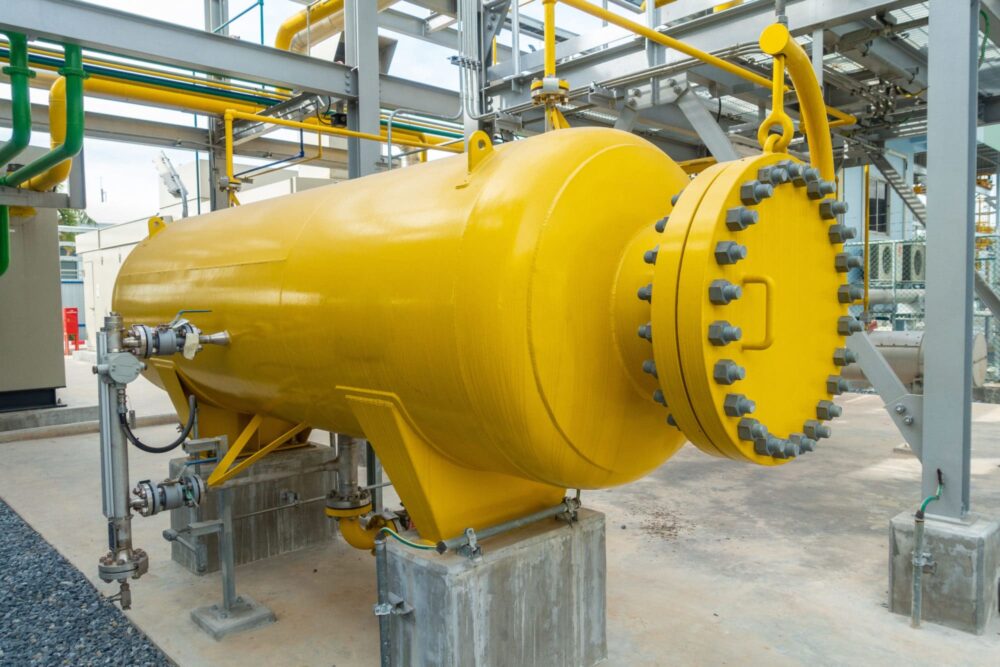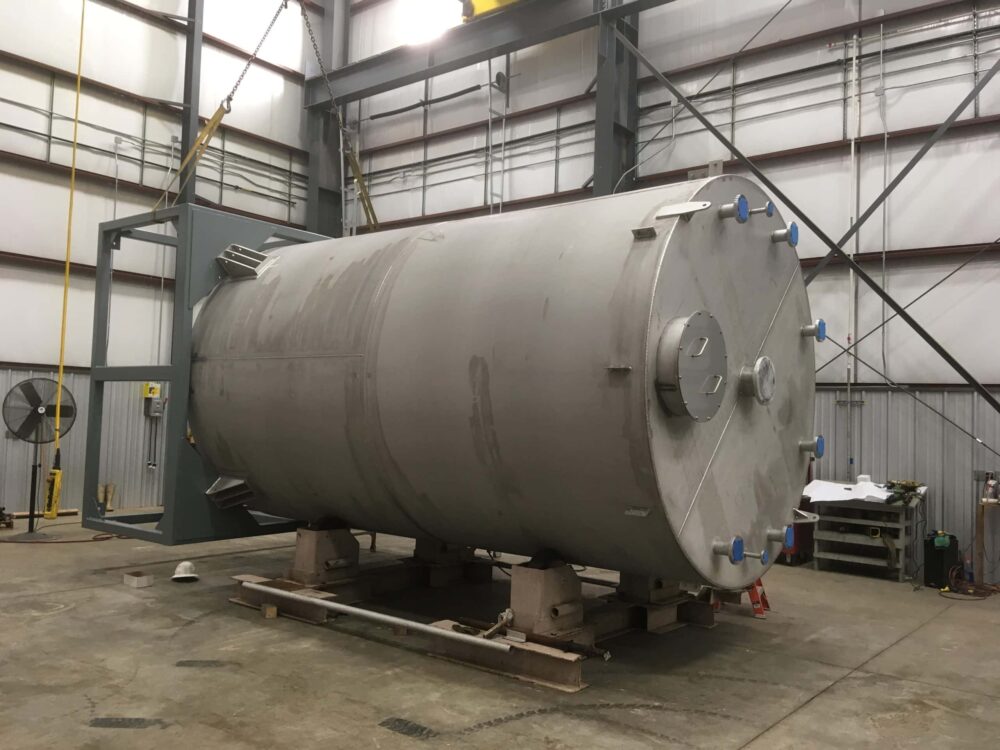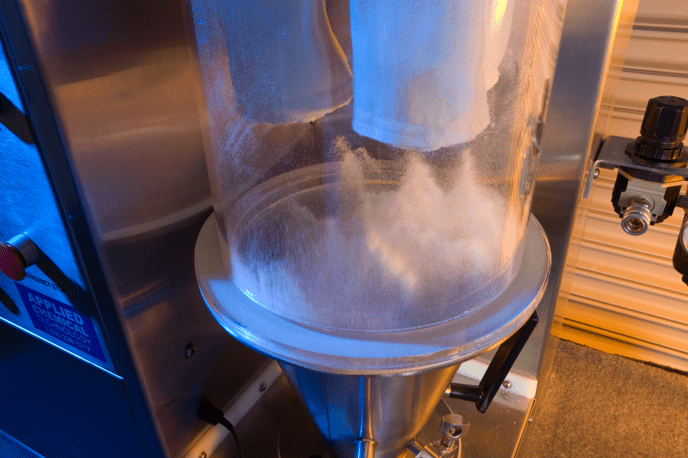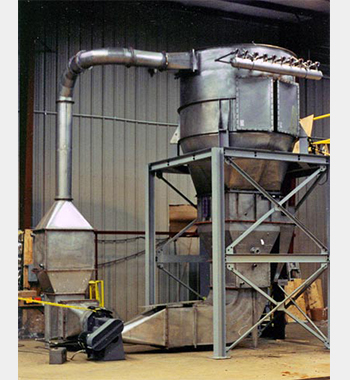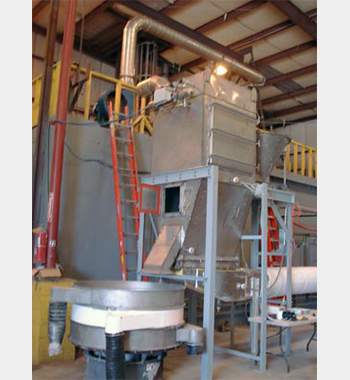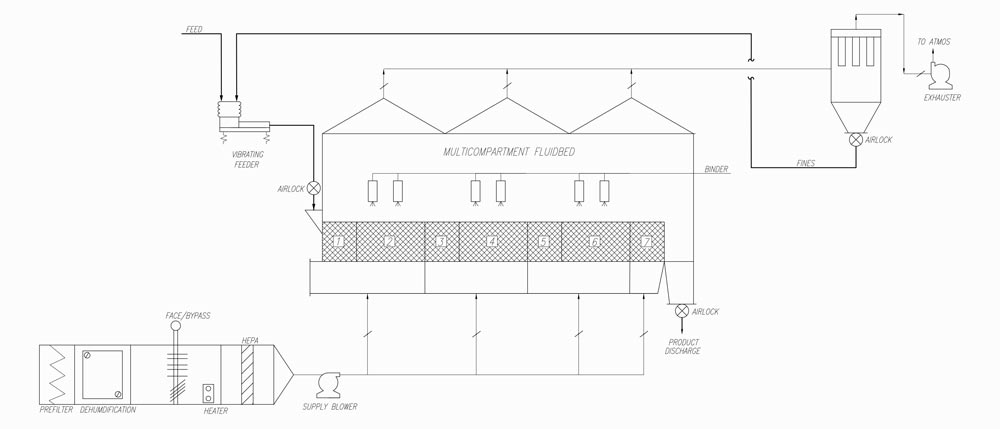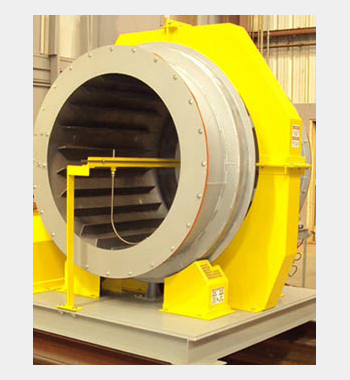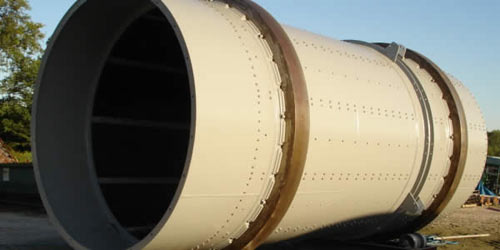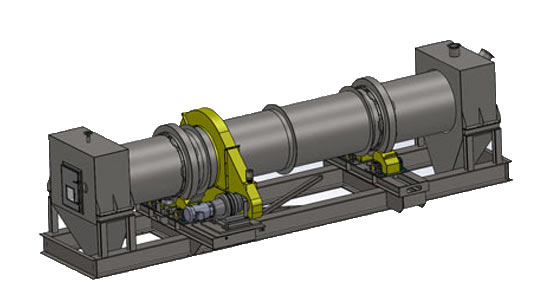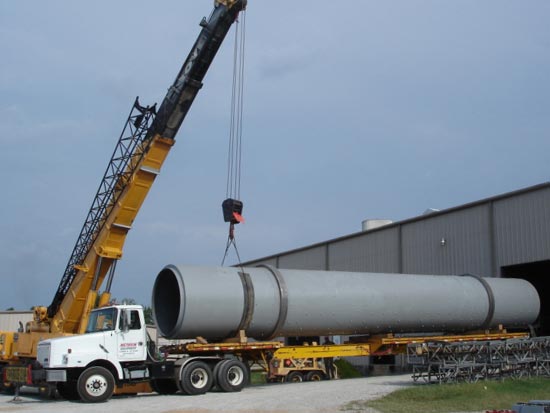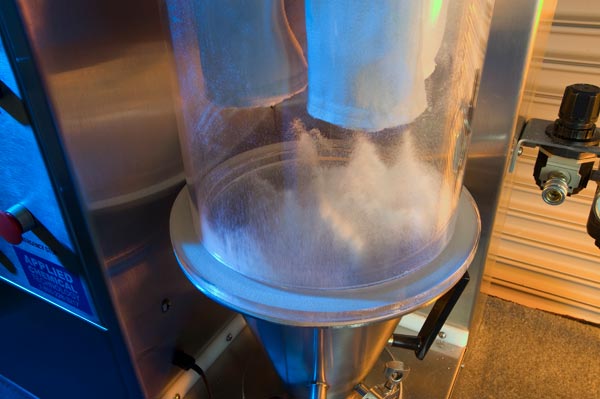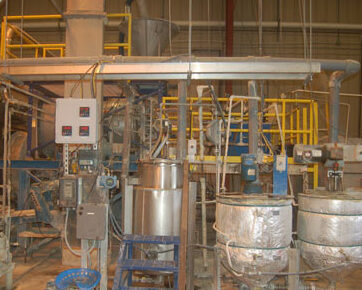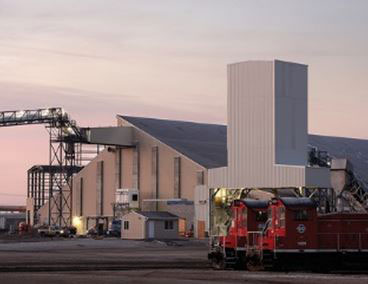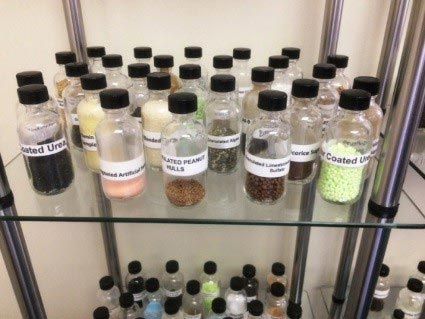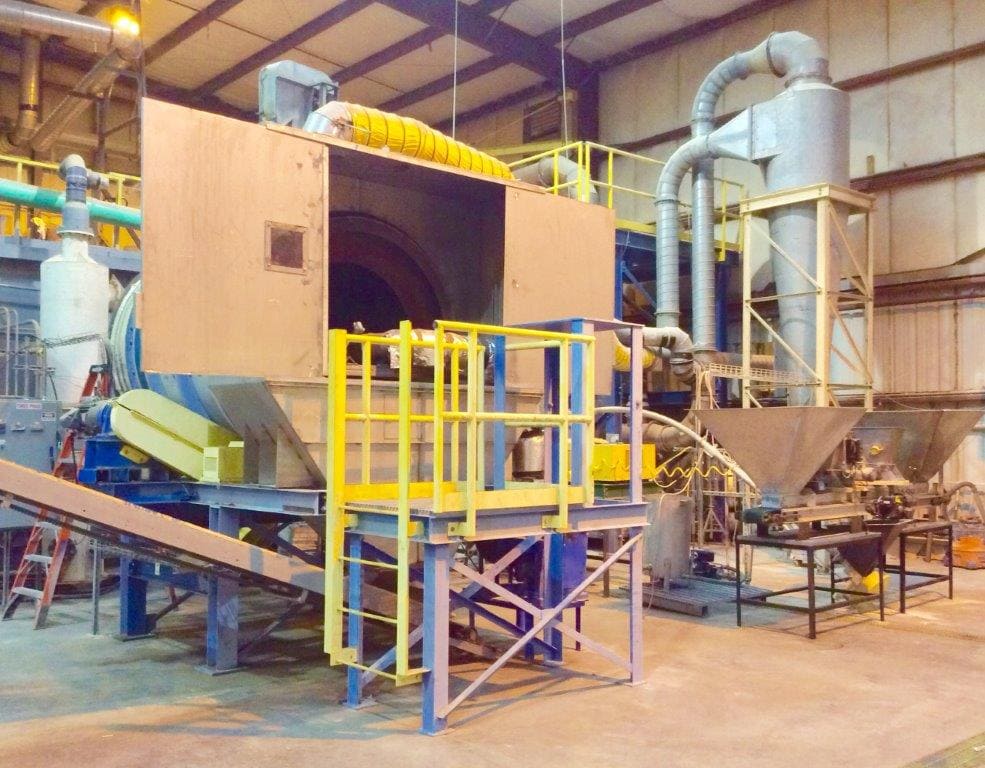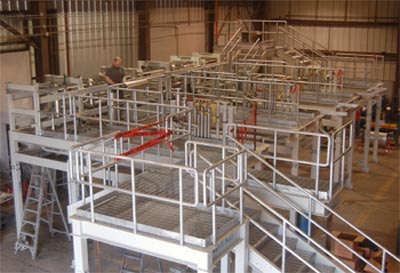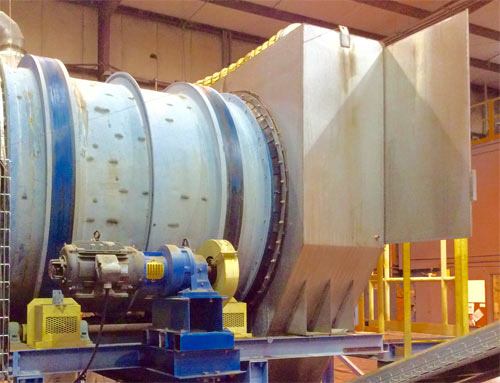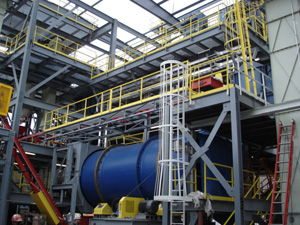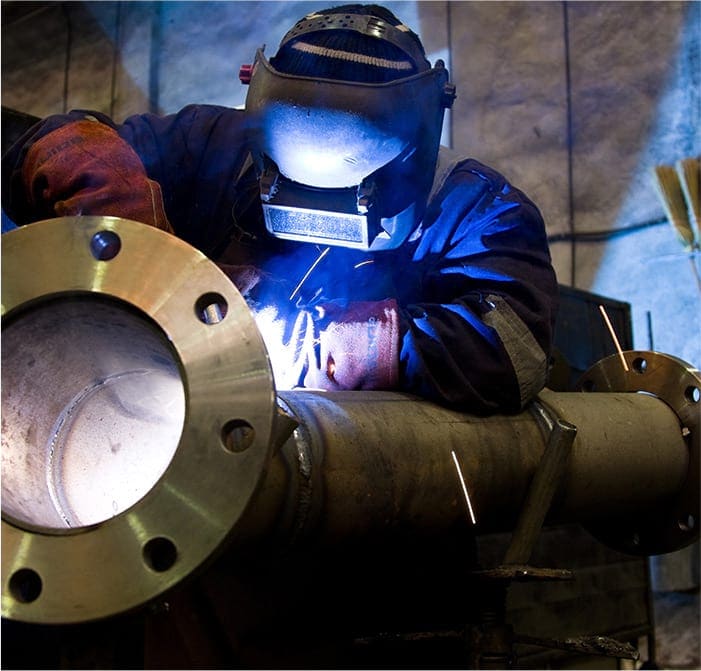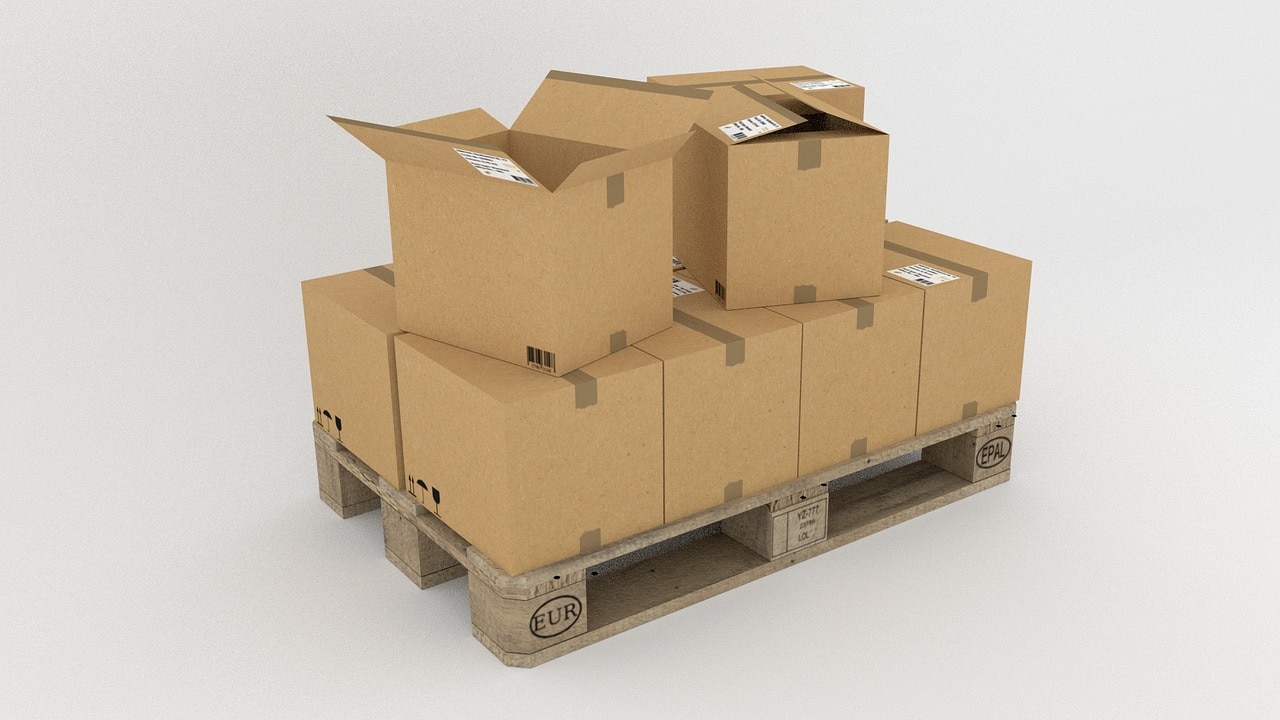Agglomeration is the process of converting small diameter solid particles (typically powders between 5 µm and 100 µm) into larger diameter granules (500 µm to 800 µm) composed of the initial particles. Below is a series of illustrations showing the growing of a granule through agglomeration. As each granule grows, the particles making up the granule are held together by binding forces. These forces form bridges between particles holding them together.
Although powders can actually form agglomerates on their own, binders are typically used to form larger agglomerates. Binders are additives to particles that provide bonding characteristics and produce a desired final product size. These binders may be added as liquids, solutions, or solids depending on how they are added.
Three Basic Types of Agglomeration:
- Growth – the granule grows as the particles join typically through the use of liquid binders
- Compaction – the particles are pressed together often with the use of a solid binders
- Heat Sintering – the granules are held together by liquid bridges that form between the solids when they are heated






